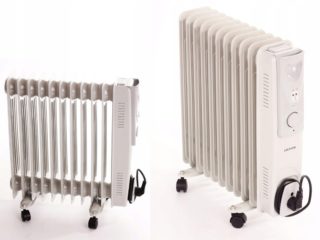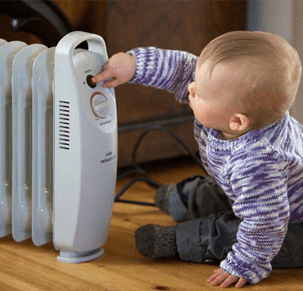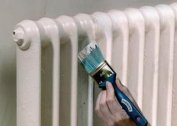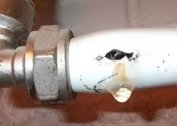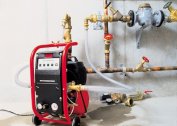To solve the problem of which heater is best to choose for a home, buyers do not always focus on profitability and profitability. For women, an important criterion is the appearance of the device and how it fits into the overall interior. For men, the key is the economic side of home heaters, the types of which have varying degrees of energy consumption and efficiency.
Types of heaters and their characteristics

When choosing a heater for a house or apartment, it is first of all necessary to decide whether the devices will be the main source of heat or standby, whether the device will have enough power to heat the required area.
In supermarkets there is a huge selection of models of imported and domestic manufacturers that differ in the principle of operation, cost, quality, installation method, power and electricity consumption.
The choice may differ based on the area of the living space, climatic features of the region, the presence or absence of an alternative heating method, for example, an autonomous gas or fireplace.
Oil coolers
Electric oil coolers have a simple device. Externally, they are a ribbed body with an increased heat transfer area. Inside is a heating element and a container with refined mineral oil. When you turn on the oil heats up and gives off heat to the body, which in turn transfers it to the room.
An oil cooler is installed closer to the floor, where there are heavy cold air masses. The device heats them and warm air goes up.
Advantages of oil heaters:
- High degree of protection - all elements having a high temperature are insulated. In this case, the outer part does not warm above 60 degrees. In this mode, fire and injury from burns are not possible.
- The ability to work for more than 3 days without a break, since the device has protection against overheating and automatically maintains safe temperature conditions.
- Oil radiators operate completely silently, except that sometimes a sound is heard when the device is turned off.
- Long service life as internal parts do not burn out.
- The device does not emit odors during operation.
- The humidity level is always maintained within 60%.
- There are several operating modes - for cold rooms and for additional heating.
- The degree of protection against moisture allows you to install the device in wet rooms.
Of the disadvantages:
- Oil-free radiators without a fan take longer to heat the room due to a lack of forced air circulation.
- Big weight of the product. It is difficult to carry if there are no wheels.
- One heater is able to heat one room in the winter with high quality, therefore, as the main source of heat, it is necessary to install a device in each room.
There are several modifications of electric oil equipment, which are distinguished by the method of installation - floor, wall, small devices that can be placed on the table.
Wall-mounted models with a fan are considered the most economical. They are more noisy, but they heat up faster and consume less electricity. In fact - oil radiators are all similar in principle of operation and differ only in power and quality of internal parts.
If you need to use a radiator as a clothes dryer (you can’t hang anything on top of ordinary ones), it is recommended to choose a device with a special frame on which things are placed.
Convectors
Electric convectors as heaters for an apartment are a good solution if central heating is not already turned on and the cold has already begun.
You can choose one of the available characteristics:
- By type of installation - universal, wall, floor, baseboards.
- Heating element - needle, tubular or monolithic ten.
- By type of thermostat - mechanical, electronic, with programming function.
The convector device is based on the physical properties of air: there is an intake hole at the bottom through which cold air enters the heating element. It then heats up inside and blows up. Thanks to the built-in fan, the process of heating the room is very fast.
The walls of the body heat up slightly, so a person can not get a burn. In apartments where there are small children, additionally install protective boxes that do not allow touching the hot appliance, but do not interfere with air circulation.
Wall-mounted models are more popular, as they can be placed under the windows to cut off the cold air flows from the double-glazed windows.
Advantages of convectors are:
- The lack of open flame, so the oxygen in the room is not burned.
- Constant humidity is maintained, which is important for indoor plants and human respiratory organs.
- Different modes of operation.
- Low noise even when the fan is running.
- Models of devices built into the floor allow you to organize invisible heating, which does not catch the eye, which creates streams of warm air of different intensities.
The devices operate in automatic mode, therefore, do not require observation. In the absence of tenants, you can turn on the economy mode.
Of the disadvantages:
- high energy consumption and heating costs;
- powerful appliances are expensive.
Convectors can be transported thanks to the wheels. The degree of protection allows the device to turn off in the event of an accidental fall.
Infrared emitters
The principle of operation of infrared emitters differs from other devices. If they all warm the air, then the energy of the IR heater is directed to the surrounding objects - walls, furniture. If there is a surface opposite the heater that is capable of absorbing infrared radiation, then it is heated first, then it transfers heat to the surrounding space. Only 10% of the energy comes from heating the air masses.
Varieties of IR heaters:
- With a heating panel. Heating occurs after heating the front panel of the device. This protects people from excessive infrared radiation.
- The device without a heating panel. Inside there is a reflector - a carefully polished panel that amplifies the waves and directs them to a specific object.
- Gas autonomous IR emitter. Works from a portable cylinder. The disadvantage is increased oxygen burning.
Available in various designs - ceiling, wall, portable floor. They also differ in power: there are models that can heat large rooms, there are room models. Heaters have been developed for greenhouses, which significantly increase the quality and speed of ripening, simulating solar energy.
Advantages of IR devices:
- efficient energy consumption;
- does not raise dust during the work unlike convectors with fans;
- You can choose a model for a large room with high ceilings.
Disadvantages:
- You cannot program this type of device to use them in smart home systems. For each device you have to make separate settings.
- When cooling, the IR emitters emit sounds, since the metal parts in the structure have different degrees of expansion when heated.
When choosing this principle of operation, you need to choose a device by the type of emitter, which are made from different materials.
Fan heaters
To choose a heater in the room, you can supplement the list of offers from manufacturers of fan heaters. This option is unlikely to be suitable as the main source of heat, but as an alternative it is often used.
The principle of operation is based on the forced circulation of air masses in the room. Its construction is simple: a casing, a heating element and a fan that moves cold flows to the burner and carries them around the room.
Devices differ in power, type of heating element, design, number of operating modes.
The heating element may be:
- A spiral, while a thin nichrome wire is wound on a ceramic roller. If dust gets inside, the appliance emits a burnt smell. The wire can heat up to 1000 degrees, which is unsafe if the fan is accidentally dropped.
- Ceramic, safer, as the element heats up to 150 degrees. The area of the heated element is larger, so heat spreads faster. The disadvantage is the high cost.
- Tubular, whose heater warms up to 500 degrees. The life of such fan heaters is much longer. Price, unfortunately, too.
Fan heaters with high power are called heat guns and are used to heat large areas with high ceilings - industrial.
All models are portable, since they are more profitable to use as backup heating - for a summer residence, a garage.
Key selection criteria
For frequent use, it is recommended to study recommendations on how to choose a heater for an apartment or a private house:
- Devices that dry the air have a bad effect on the respiratory system. If the house has many indoor plants, they will also be uncomfortable in winter, especially tropical species. For appliances with an open burner, you must buy household humidifiers.
- The foreign body sensor turns off the radiators if a foreign object enters. In houses with a large area where there are small children, it is necessary to install such protective devices, since it is difficult to keep track of the child.
- The thermostat protects the device from overheating, turning it off when the desired temperature is reached. Some models have built-in temperature sensors if it is important to maintain a certain range.
- When buying an oil cooler, it is better to choose a model with a larger area. With the same power, it will give off more heat.
Power is the main selection criterion, which is determined by the size of the rooms and the height of the ceiling. For constant use, it is not advisable to save on heating appliances, as these are long-life devices.
For a private home
For a private home, infrared or convection equipment is more suitable, as some focus on objects, heating them, others circulate using fans. Large areas with this choice are easier to control.
When choosing heaters for the home, you can focus on pricing, but more often well-known companies wind up the cost because of their popularity and fame. A device with the same characteristics can be bought half the price by choosing a domestic manufacturer.
For apartments
For small rooms, low-power convectors are suitable. One powerful appliance is enough to heat a studio apartment. Which heater is best for an apartment depends on how large the area is and how many partitions are found along the path of the warm stream.
The best models of heaters
Heaters may have different costs. At the same time, it is important that the price meets the quality. It is better to immediately exclude from the selection cheap models of production in China. Their disadvantage is that the manufacturer uses low-quality materials inside the device that quickly become unusable.
What models are worth paying attention to:
- Ceiling models of the Ballu brand. IR type heaters. Economical in energy consumption compared to efficiency.
- Convector type heater - Atlantic Bonjour. The case heats up slightly, but at the same time the device maintains the set temperature mode thanks to the built-in thermostat. Buy it mainly for children's rooms.
- Heat gun of domestic brand Interskol. It works on heating and cooling, easy to carry, is not expensive.
- The Polaris oil device is the best in the rating of heaters of this type because of the price-quality ratio, as well as the availability of additional functions.
- The budget heater of the ceiling type Neoclim, which is a semblance of an air conditioner, only in this case works only for heating.
Each model, depending on the configuration, differs in price, so one of the criteria for choosing heaters is their cost. Especially when you need to buy several devices at once.
Rating
In the ranking of electric convectors, the leading brands are Ballu, Electrolux and Noirot. If you choose infrared devices, it will be a UFO, although the range of products remains the same.
By maintaining an affordable price, these brands have excelled in sales. Devices are distinguished by durability and service life without breakdowns. The advantage of companies is the availability of service centers in most cities where you can bring a device or call a master at home.
Domestic manufacturers lag behind in the rating, since the products do not differ in special designer taste, although the quality of parts is not inferior to foreign devices. It is worth paying attention to such companies as Almak, TeplEko, Nika Panel, ESB Technologies. The range may be limited, but in Russia, companies are trying to develop individual areas of instrumentation in order to comply with the level of quality.

